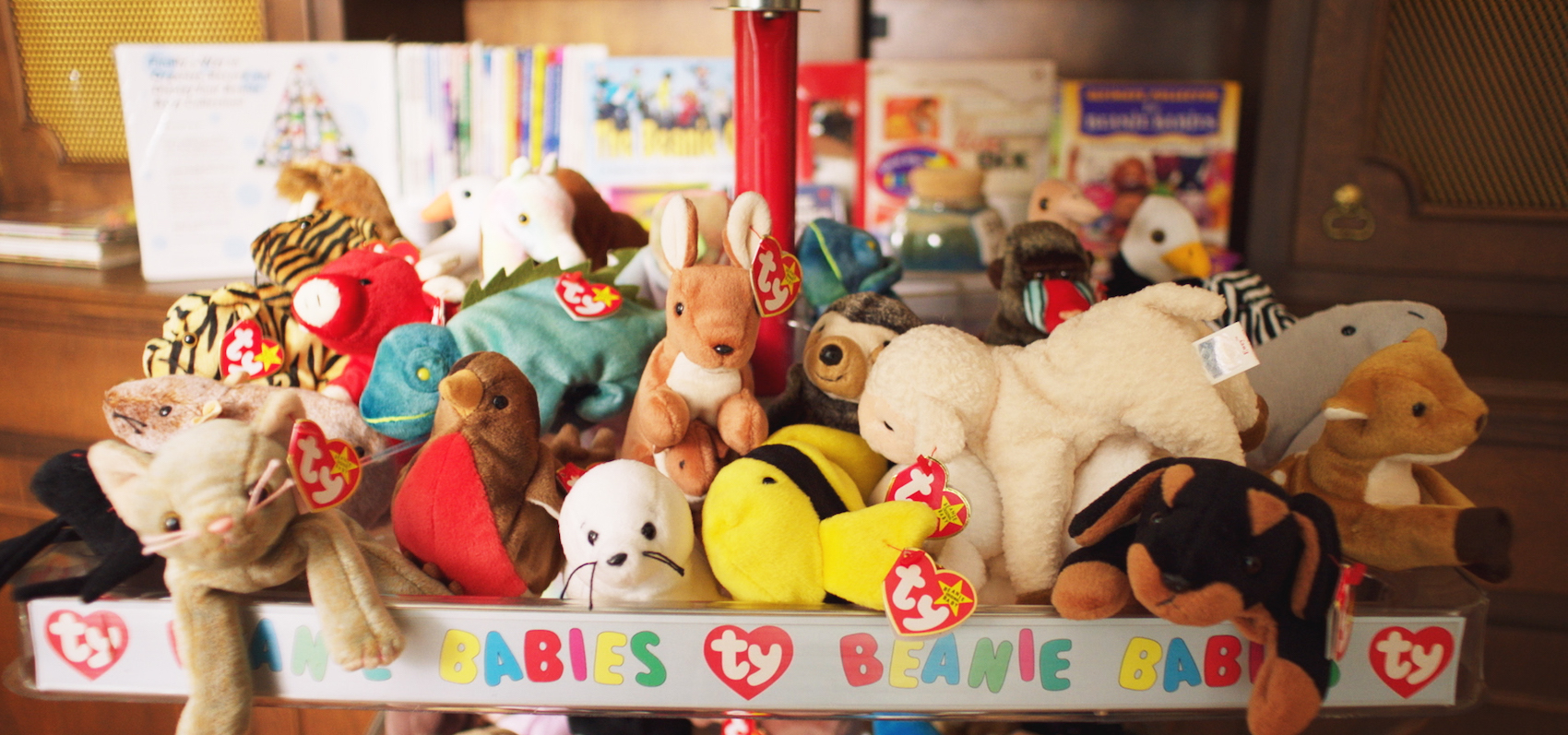
In the 1990s and early 2000s, there was a brief national craze of the Beanie Babies, those cute, under-stuffed, pocket-sized animals with heart-shaped name tags and adorable tiny black eyes. While retailing for five dollars, many were resold for hundreds and sometimes thousands of dollars, although, nowadays, most of those once-lovable critters are hibernating—taking up space in attics. “Beanie Mania,” a new HBO Max documentary, explores the over-the-top trend, the creators of the Ty Warner toy sensation, and the eventual fallout. After viewing the film, I had many unanswered questions, especially about the mysterious Ty Warner and my next-door neighbor Mary Beth Sobolewski, the author of the national magazine Mary Beth’s Beanie Baby World, a chief originator of the craze. My interviews with both “Beanie Mania” director Yemisi Brookes and Mary Beth Sobolewski shed light on my questions along with why it’s important to tell women’s stories.
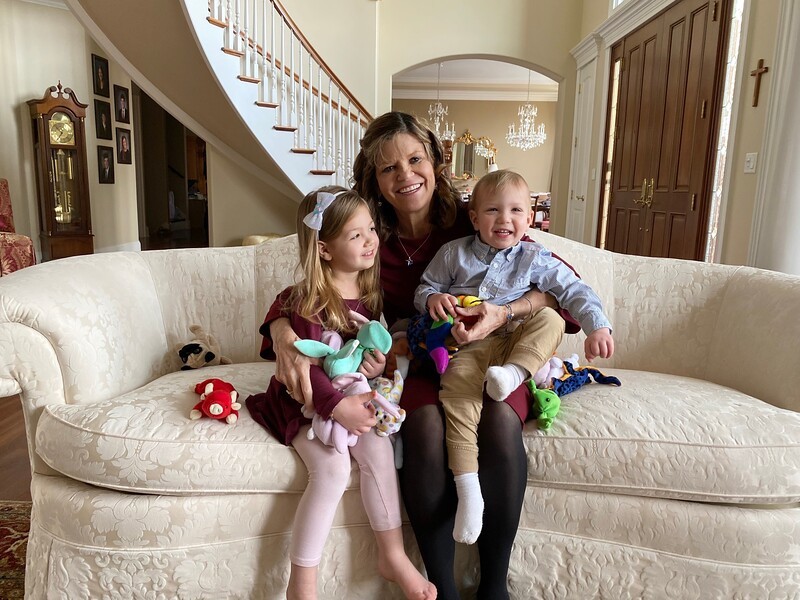
What struck a chord with me in viewing the film is that my hometown of Naperville, IL, is shown as the epicenter of the craze. Five women are highlighted, Joni Hirsch Blackman, a People magazine reporter; Peggy Gallagher, an authenticator of Beanie Babies; Becky Estenssoro, and Becky Phillips, two co-writers of Beanie Baby price guide books; and Mary Beth Sobolewski, the editor of Mary Beth’s Beanie World, and staff column writer for the Chicago Sun Sunday edition. All of these ladies lived in Naperville, except Mary Beth; she actually lives in nearby Lisle.
In speaking via Zoom to director Yemisi Brookes, I asked her what the primary purpose was in highlighting the five women; she replied, “To showcase these amazing entrepreneurs, as I feel people underestimate the power of women in general—they were not so-called soccer moms, they were very smart women that were not just staying home to bake cookies for the school bake sale, they were creating an empire, were organized, and they were business savvy.”
Brookes shapes her film around Mary Beth Sobolewski as she not only published a national magazine, but also she was closest to Ty Warner and the celebrity face of the craze.
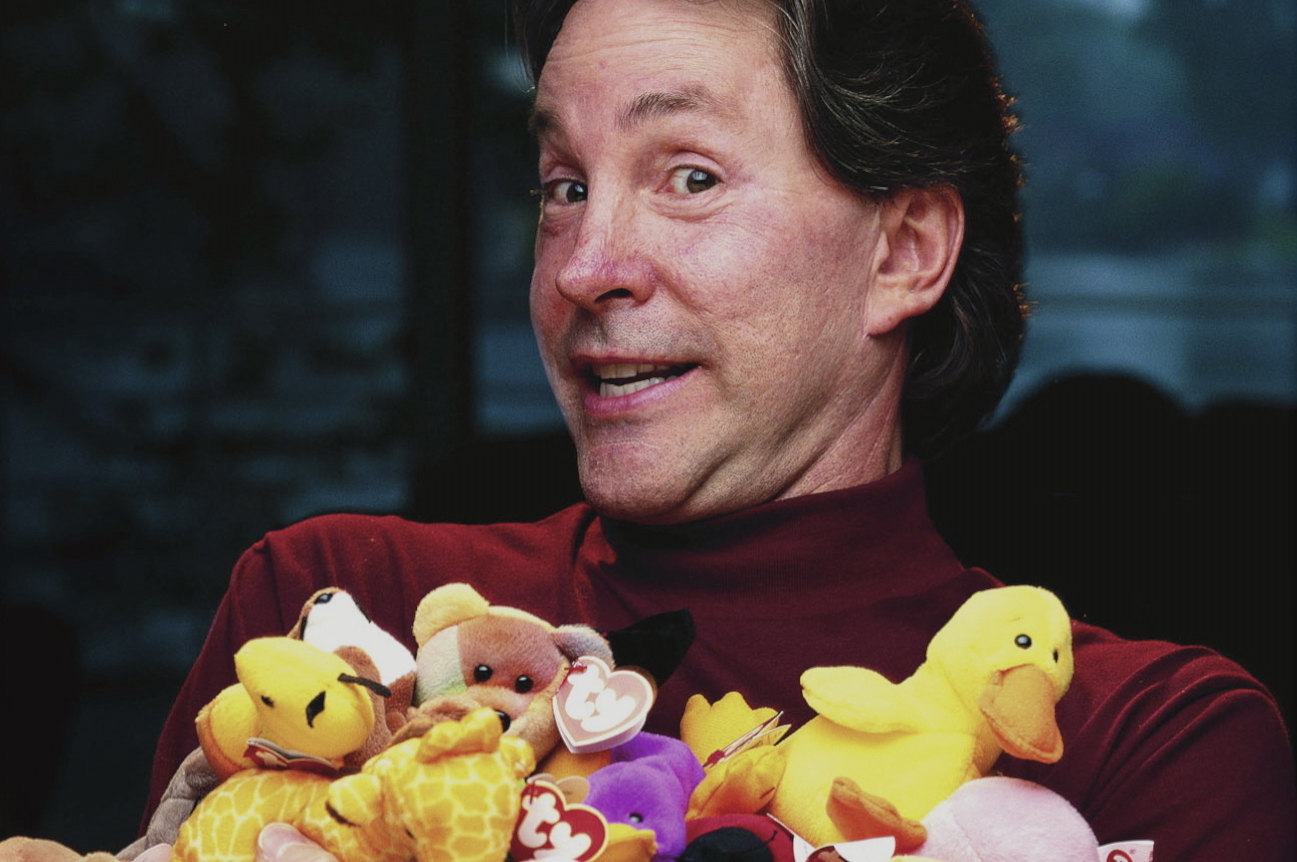
In 2004, I met Mary Beth and Ken Sobolewski as we bought a parcel of land to build our home next door to theirs, and by that time, Mary Beth was entirely out of the Beanie Baby business. All I knew of her past was that she was the editor of her famous magazine. Mary Beth never talked much about those days; she would say, “That part of my life is over.”
Upon the birth of Mary Beth’s first child in 1990, she left a job she loved at IBM as a technical computer engineer; working there ten years garnered heartfelt memories as she met her future husband Ken, a co-worker. Fast forward six more years, as Mary Beth is on vacation in Cape Cod, Massachusetts, wandering in a gift shop with her daughter, she spies a little Ty Warner toy crab named ‘Pinchers’ the Lobster, “I couldn’t get over how adorable and soft he was,” Mary Beth said smiling.
Pinchers the Lobster was the start of Mary Beth’s Beanie Baby collection as she replaced her porcelain statues from her living room curio cabinet with the stuffed toys. In the film, Mary Beth talks about a collector’s mentality stating that collectors feel they never have enough, and saying that this is very dangerous. “It’s always dangerous when you live in the zone where you are not completely happy with what you have; you need the next thing. That’s a dangerous way to live; a collector, just by the very nature of collecting, always wants the next thing because your collection is never complete.”
In the film, Mary Beth said it became an addiction and an obsession and that she would’ve paid whatever it would take to buy a certain Beanie Baby. I asked, “What’s the highest amount you paid for a Beanie Baby?” Mary Beth replied, “Well, you need to know that I was aware of the rare Beanies, the hard-to-find ones, and when I did find Humphrey the Camel in Canada, I was ready to buy at any price, yet I sold others to compensate for that purchase. I’d say the highest price I paid was about $500.” And how many Beanie Babies did Mary Beth have at one time in her life? She answered, “Maybe a thousand.”
In talking about the beginning of the magazine and the collecting in 1996, she said, “We would call the Ty Warner offices to find out about a list of the products, and they would never speak to us. When a publishing company approached me to be the editor of a magazine that reports on all things Beanie Babies, I said yes and hired two female assistants to scour the internet and Beanie Babies conventions. It was like a scavenger hunt to be on the pulse of the secondary market. I published price lists in every issue.” The magazine took many more hours than her full-time job at IBM; she worked weekends and traveled out of state, even to London.
And when was her first meeting with Ty Warner? She said, “The first time I met him was in New York at the Toy Fair at the J Center (Jacob K. Javits Convention Center), I went up to his booth intending to introduce myself, and he said right away, ‘Hi Mary Beth,’ and he proceeded to kiss me on the side of my cheek. I was a fangirl at the time and very flattered to be recognized. Also, to know that in some way, he probably appreciated what I was doing because he obviously knew about the magazine.”
In reflecting on the craze, she said it was nothing anyone could have predicted, that it just happened; it brought her both joy and guilt as the hours did impact her time with family. What started as a hobby catapulted Mary Beth into the limelight; she became a sought-after celebrity speaker and public figure. “I would take the 6:00 AM flight to Pennsylvania to be on the QVC TV show at least five or six times, and I would fly back and drive my kids’ carpool at 2:45 Central Time. There are so many days like that, and there were so many news shows, all the news stations on cable, and talk shows.”
The Mary Beth Beanie World Conventions held in London, New York, Chicago, and other areas gave fans access to meeting her and having their copy of the magazine signed. “I remember at the height of the craze looking at the endless line of people who were standing in line, and it was surreal; I really did enjoy meeting the collectors and hearing their stories; for me, this was the best part of my job. It bridged the generations so well; my mom and daughter were collectors. It gave you something in common with so many people. There were many fun times, like when Rosie O’Donnell called; she was having Penny Marshall on her show. Penny Marshall, at the time, was a well-known Beanie Baby collector; Rosie wanted to know where she could find the Princess Diana Beanie Baby, so we connected her with the right shop. Many days, I would get up at 5:45 AM. I would be interviewed on two or three radio stations before the kids woke up. Oh, and once in a while, you’d hear the baby cry; it was just bizarre. This all sounds so wonderful, but something has to give; yes, I’m working at home, but I’m working 24/7.”
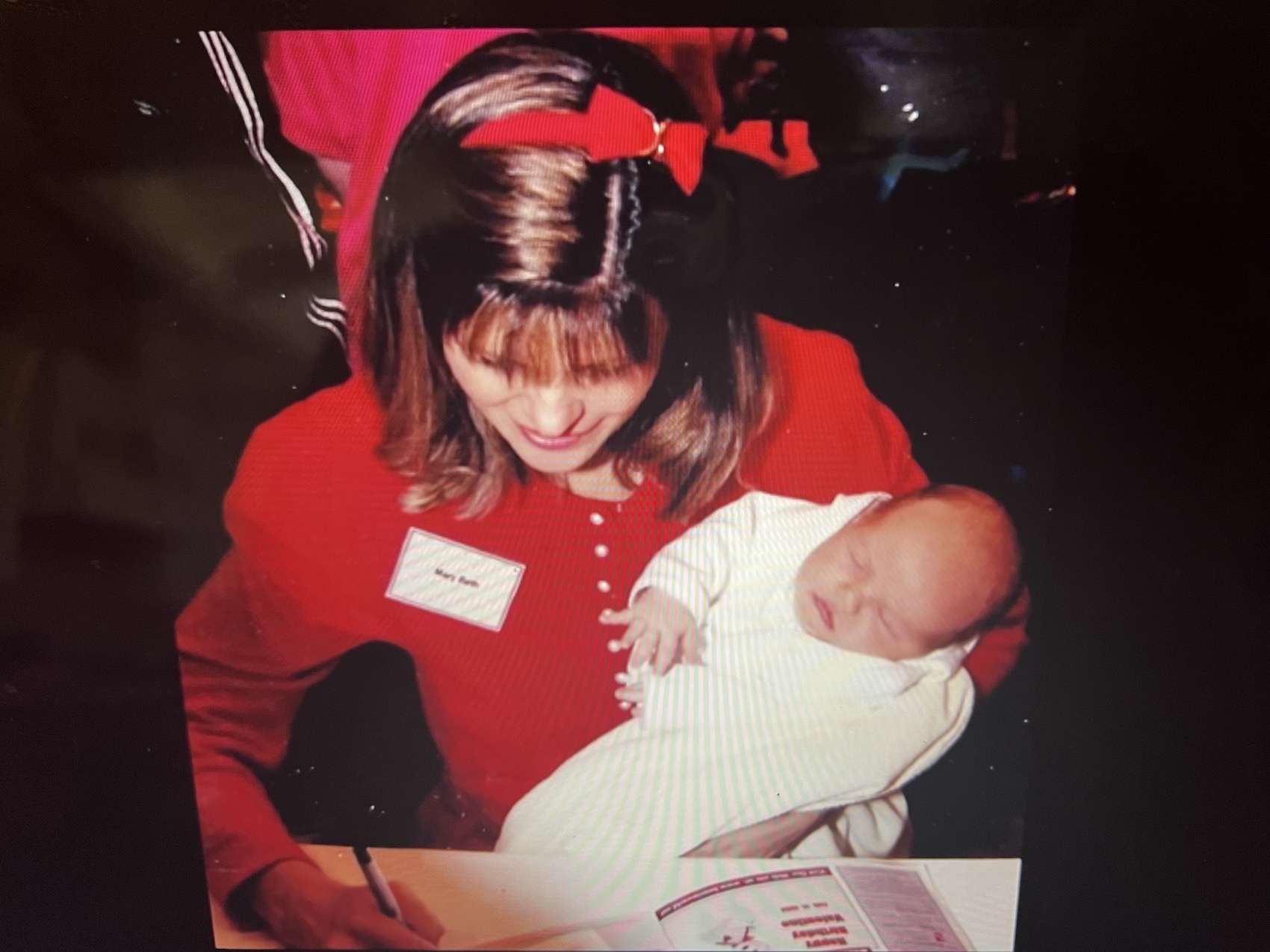
Ultimately, she and her publisher were sued individually by Ty Warner for infringement of intellectual property. Mary Beth said, “We needed to change our name. It became “Mary Beth’s Bean Bag World.” from August 1998 through 2002. At the end of it, the Beanie market was starting to crash, and our publisher, H and S media, went bankrupt. I decided to stop collecting, it was taking up too much time, and the new releases were coming every six weeks. I gave away most of my collection, only keeping a few, and I’ve never looked back.”
During her wind down, she received a call from Ty Warner’s office. Having been home only three days after having her fifth baby, they asked if she would come in and talk. The following week, with her baby, she went to hear them say, “We’d like you to continue the magazine with us.” Ty Warner was part of this conversation and future toy brainstorming meetings that followed.
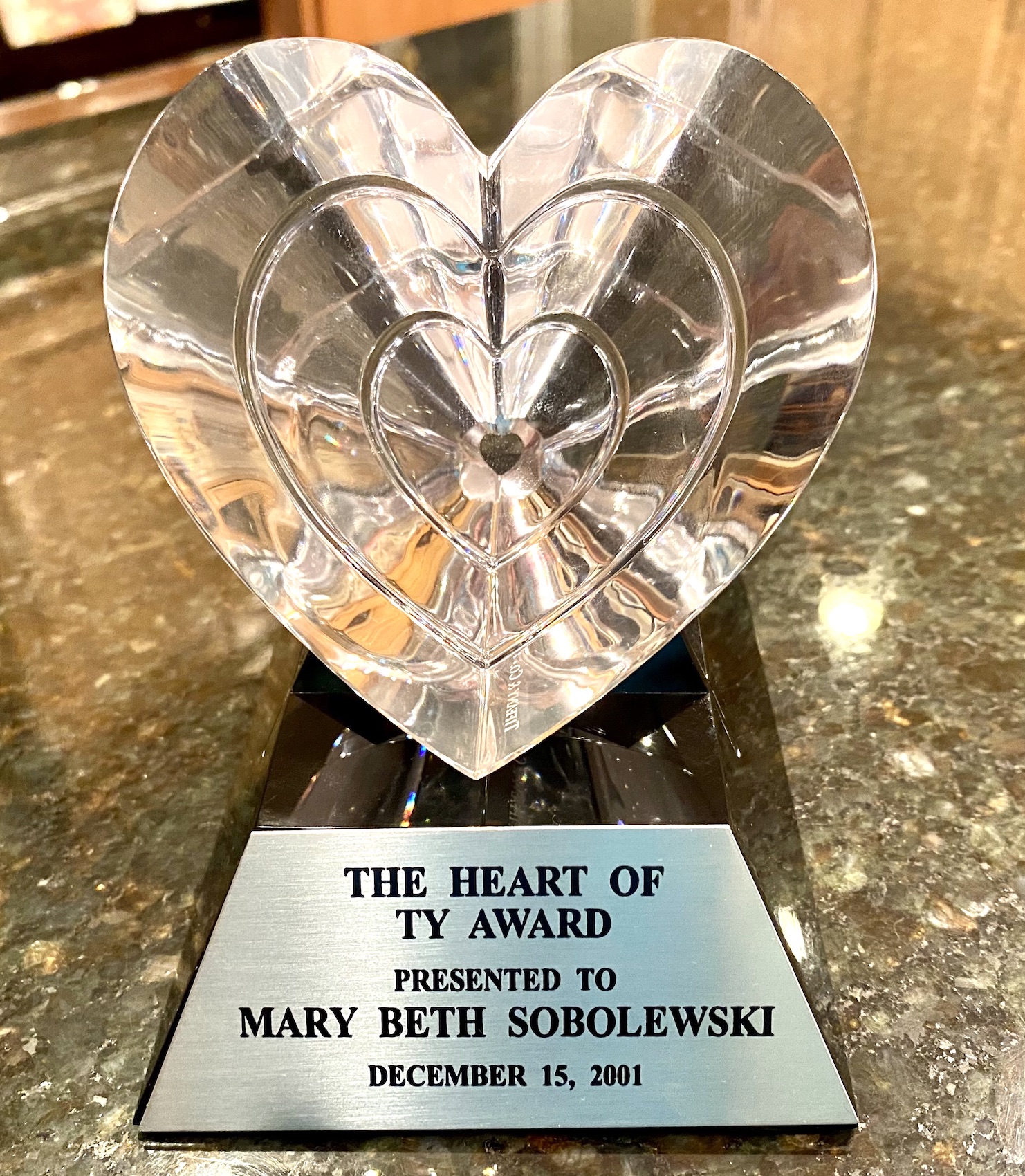
I asked Mary Beth if she felt that the Ty Company and Ty Warner had finally realized her worth. She replied, “Yes,” and told me there was another story she’d tell me that she’d never dreamt would happen. She began, “The Ty Company invited me to speak about the history of the Beanie Babies at their lavish employee dinner in New York, which was a big deal. I was proud to be asked to speak. However, before my talk, the marketing director started speaking about my contributions to the Beanie market, and all the years I promoted the toys, I realized it wasn’t an introduction. They were giving me the ‘Heart of Ty Award,’ given to one Ty rep every year. It’s a huge deal, and they gave it to me! I was dumbfounded. This was the furthest thing I could have ever imagined. The Ty company employees gave me a standing ovation. Yes, these people, it was surreal. The award is beautiful, it’s a Tiffany crystal engraved heart on a stand, and it’s so special to me. I’m not sure I’ve ever told that story before.”
So, what are Mary Beth’s thoughts on the psyche of Ty Warner? He’s been described as a Willy Wonka type of person. Mary Beth has referred to him as Oz in “The Wizard of Oz.” She says, “There was a veil between him and everybody else, including me, who was, you know, reporting on everything the company did. I thought he was fascinating; he had all these great ideas and was so attuned to detail. He would ask his employees what we thought about certain toy variations. He’s the CEO; he owns the whole company and is so in tune with the details. I thought that was just really cool, and I really did like him.”
Yemisi Brookes states fairly quickly in her film “Beanie Mania” that Ty Warner would not grant her an interview. I asked her to tell me a few questions she would have liked to have him answer. She replied, “I would like to know how much money he actually did make on selling the $5 Beanie Babies, as we don’t really know the actual amount. With profits in the billions, it would be very interesting to know that and to know the effect the five women in the film had on those profits with creating the demand.”
“Beanie Mania” portrays the five women as entrepreneurs; yes, they appear a bit obsessive in their love for the cute critters, although if you flip through any social media site, you’re sure to find an over-the-top dog or cat lover. The women’s excitement and enthusiasm are shown loud and clear—as are their business skills and determination. The film’s creativity is also a plus as the posable Beanie Babies are given names to introduce each character while posing at times with props and their paws over their eyes to express feelings. She relayed that she had a great time meeting and filming all of the women and praised Mary Beth’s contributions, saying, “She’s wonderful, and very comfortable with a film camera crew and being on camera due to all of her TV appearances.
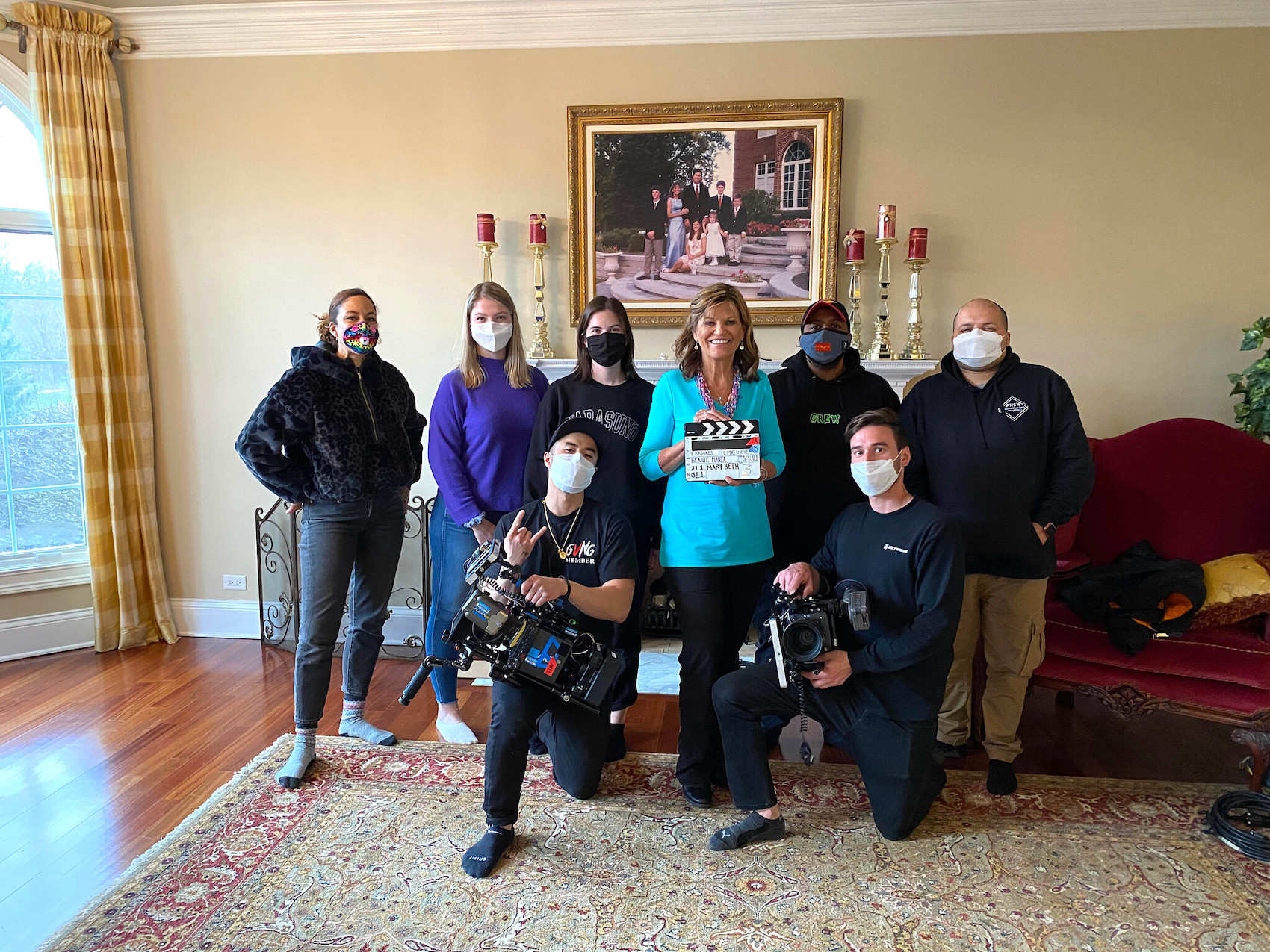
Conversing in my home for over an hour and a half with Mary Beth was a full-circle moment, as she’s maintained a modest demeanor about the celebrity time in her life, that included unbeknownst incredible accolades. For myself, in learning her guilt in regards to the job that kept her busy 24/7, somehow, my self-imposed guilt as a full-time working mom softened. I’m thankful that I know her story of caution and gratitude.
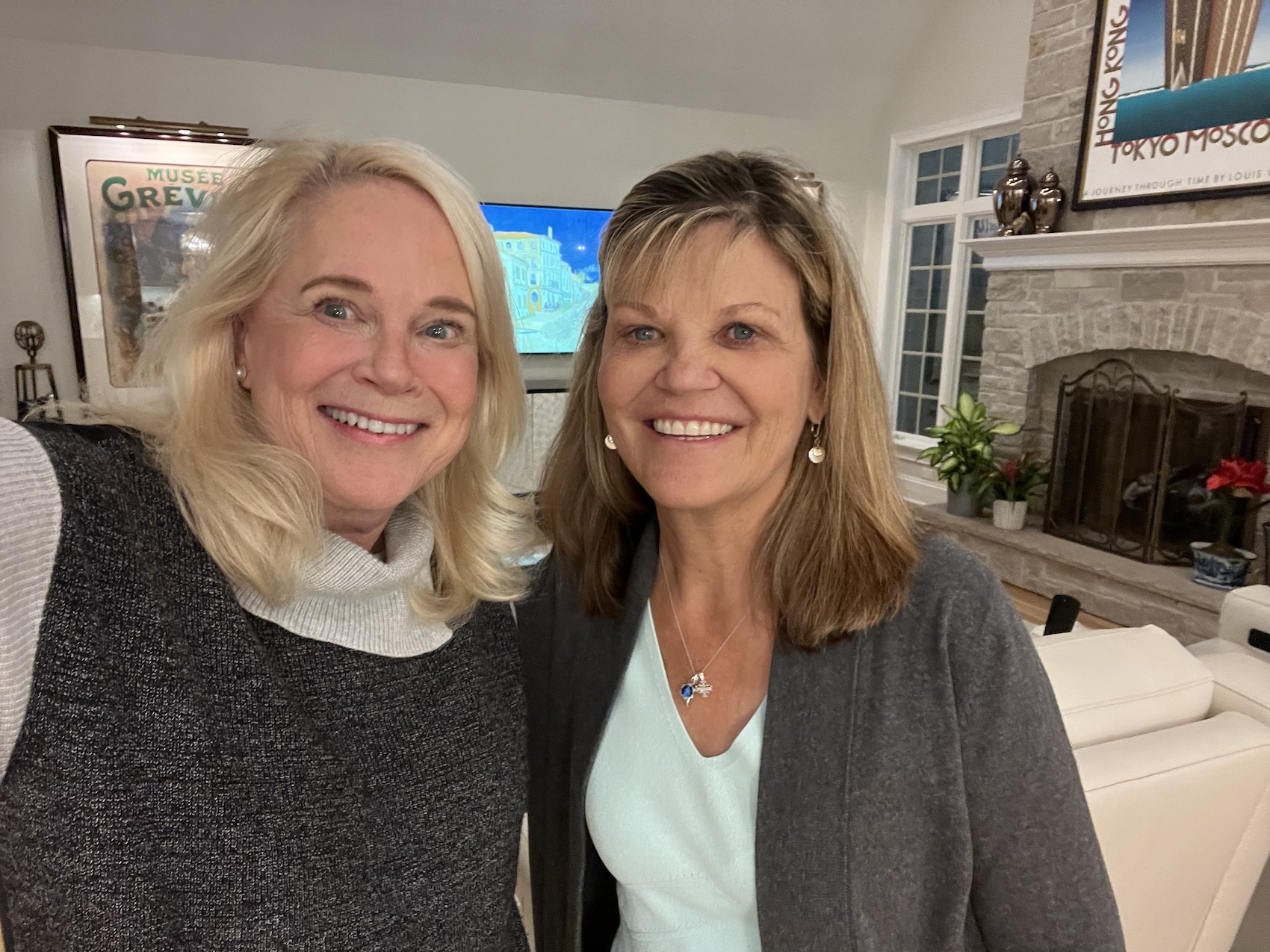
And what are Mary Beth’s interests now? She remarked, “My life couldn’t be any more different now than it was then. My youngest, who is born in 2001, is now a sophomore in college; we have two of my sons’ weddings this year and two grandbabies who fill my heart with so much joy, with one on the way. My passion is ministry in the church, and I went back for a master’s degree in theology at Notre Dame University. I’m about halfway through.”
It’s essential that we tell all women stories as they validate the reality in the achievements of women in all facets of life—business, motherhood, the arts, sports, medicine, community, and government. They serve as role models for not only young girls and young women—young boys and young men also learn from these stories. Mary Beth’s story follows one’s passion and commitment as she utilizes business skills while raising children. Hers is a story of empowerment; she allowed herself to fulfill her dreams, despite the obstacle of continued dissatisfaction. In the end, Mary Beth’s journey has led her to find a passion that she can regulate while feeling fulfilled.
“Beanie Mania” is on HBO Max now.
Sarah Knight Adamson©March 9, 2022
